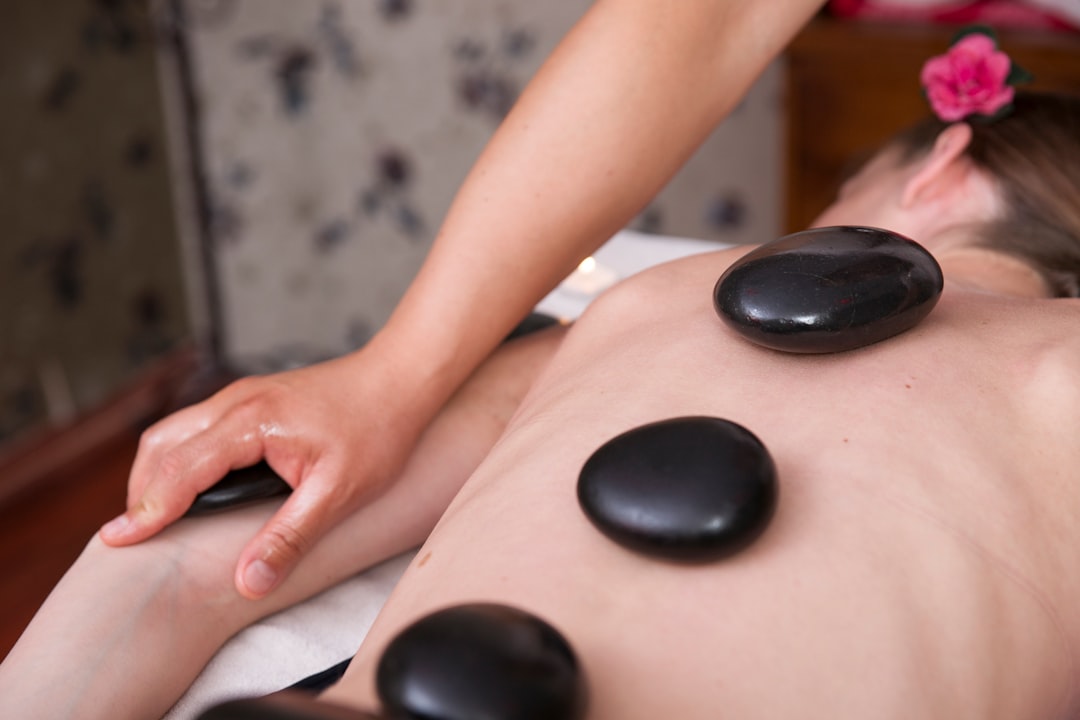

Engage prospects with a scan and streamline customer engagement with FREE QR code marketing tools by Sona – no strings attached!
Create a Free QR CodeFree consultation

No commitment

Engage prospects with a scan and streamline customer engagement with FREE QR code marketing tools by Sona – no strings attached!
Create a Free QR CodeFree consultation

No commitment
Massage supply companies are navigating a rapidly changing landscape where digital tools play a pivotal role in customer engagement and retention. In an industry traditionally reliant on printed catalogs, word of mouth referrals, and in-person storefronts, the inability to connect these physical interactions with digital data has led to common frustrations: missed tracking of high-value prospects, overlooked opportunities due to incomplete CRM records, and slow, manual recovery of post-event leads. Decision makers in this space frequently struggle to know which product brochures actually drive sales or whether leads from trade shows ever follow through. Meanwhile, capturing timely engagement is a persistent challenge. By the time a prospect fills out a form or calls, they may already be fielding outreach from competitors.
The surge in demand for massage therapy equipment and eco-friendly spa supplies means that companies must differentiate on both quality and customer experience. Yet, many businesses discover that without account-level visibility into who interacts with their catalogs or browses their websites, potentially valuable prospects remain anonymous and unaddressed. QR codes present a direct avenue to meet these expectations by connecting offline touchpoints such as packaging, appointment cards, or product displays to actionable digital experiences. For practical examples, see QR codes in marketing. This can include instant product information, feedback forms, or dynamic reordering, making the transition from interest to action seamless for both the business and its buyers.
With the right strategy, QR code marketing can transform outdated workflows, eliminate guesswork around lead sources, and help massage supply companies act on signals of intent in real time. This approach makes it simple to track customer journeys, personalize outreach based on recent engagement, and drive higher rates of retention, all through easily measurable interactions. The following guide explores how to integrate QR codes into every major touchpoint, unlocking measurable progress and new growth potential for your business.

QR codes bridge the gap between physical touchpoints and digital outcomes, yet many companies still struggle with gaps in tracking, leading to lost opportunities and missed follow ups. When events or printed catalogs generate interest but not immediate conversions, high-value prospects often slip through the cracks, never making it into your CRM or pipeline. This not only leads to wasted marketing spend but also delays outreach and allows rivals to get ahead.
The goal is to convert offline attention into online action in seconds, while capturing enough context to respond intelligently. Instead of relying on paper forms, phone calls, or generic email addresses, QR codes give buyers a one-scan path to reordering, support, or training. In return, your team gains timely data, automated workflows, and a consistent way to nurture repeat purchases.
Here is how to turn these challenges into advantages:
By replacing analog processes like collecting paper order forms, manually tallying brochure interest, or chasing scattered email feedback, QR codes equip teams to respond instantly to engagement signals. With platforms like Sona QR, every scan can be tied to a campaign, synced to your CRM, and pushed into automated nurturing, which collectively improves customer retention.

For massage supply companies, the persistent challenge lies in the offline to online gap. Customers flip through printed catalogs, handle packaging in storerooms, or attend trade shows and workshops without a simple way to take digital action. Without a trackable bridge, these interactions remain anonymous and ephemeral, and your team cannot attribute results or prioritize timely outreach.
QR codes reduce that friction by making every physical asset interactive. Codes on appointment cards can link to scheduling, promotional flyers can double as loyalty sign ups, and product packaging can send buyers to a simple reorder form. Dynamic QR codes add agility: if your offer changes or a product page gets updated, you can swap destinations without reprinting.
The value compounds when you consider how QR codes streamline engagement and data capture:
Critically, each scan can be connected to a customer profile when paired with progressive forms or CRM enrichment. That means your team sees more than interest; they see who engaged, in what context, and what to do next. For retention-focused teams, this is the difference between guessing and acting with precision.

Massage supply companies often contend with fragmented data: partial contact information, anonymous web traffic, and unclear attribution from print assets. QR codes help centralize engagement by sending scanners to the right destinations and capturing metadata automatically. Selecting the right format ensures the next step is easy for customers and useful for your team.
The most useful formats in this vertical include:
Dynamic QR codes are particularly valuable when offers, content, or inventory change frequently. Rather than reprinting materials, you can switch the destination, run A/B tests, and segment analytics by campaign. Sona QR supports static and dynamic formats, and it centralizes management so your team can build, track, and optimize in one place.

Growth often stalls when high-value touchpoints go unmeasured. Massage supply companies invest in trade shows, catalogs, and packaging, yet struggle to see which assets drive authentic buyer intent. QR codes transform these surfaces into measurable channels so you can reallocate budget to the placements that outperform.
Start by instrumenting the surfaces your customers already touch and the programs you already fund. Add unique QR codes to each asset and environment, then compare scan to conversion rates across placements. Over time, you will learn which messages, designs, and calls to action motivate action at different stages of the buyer journey.
Key opportunities include:
As you gather performance data, double down on placements that generate high-intent engagement and retire assets that do not. Over a few cycles, this simple practice improves ROI and strengthens your retention playbook.

Massage supply companies can replace slow, manual processes with QR-enabled flows that reduce friction and capture intent in real time. The following use cases map cleanly to common interactions across the lifecycle, from first touch to repeat purchase.
These use cases replace legacy methods such as waiting for mailed registration cards, relying on long URLs in catalogs, or transcribing badge scans after events. With QR codes, the journey from interest to action is immediate, and every step is measurable. For inspiration, explore real-world examples.
One of the most persistent frustrations is moving anonymous engagement into targeted outreach. Without context, retargeting relies on broad segments and generic messaging that fails to resonate. QR codes help by tying real-world context to digital identity, creating behavior-based audiences you can nurture thoughtfully. For deeper strategy on using behavioral signals, see Sona’s blog post titled The Essential Guide to Intent Data: Leveraging Signals to Increase Revenue.
Tag each QR code with campaign and placement metadata, then sync scan activity to your CRM and ad platforms. Over time, you will accumulate precise audience signals: what they scanned, where, when, and why. This supports lifecycle marketing that adapts as customers move from discovery to repeat purchase.
Here is how to structure segmentation:
Specific to massage supply companies, useful audience distinctions include spa owners versus independent therapists, repeat buyers of consumables versus one-time equipment purchasers, and buyers engaging with eco certifications versus those consuming maintenance guides. With Sona QR, each code becomes a smart entry point that tags behavior, enriches profiles, and powers precise retargeting.
QR codes are connectors that unify offline and digital channels. They make brochures, packaging, signage, and events measurable, while also unlocking new ways to personalize follow up across email, SMS, and ads. Integration begins by mapping your current touchpoints, assigning codes to each, and defining the ideal next step for the scanner.
Once deployed, codes provide a steady stream of engagement signals that fuel your broader marketing programs. Scans from catalogs can trigger nurturing emails. Workshop scans can open certification paths. Packaging scans can start a reorder subscription flow. The key is to ensure every scan has a purpose and a follow up path.
Here are ways QR codes enhance your mix:
With a centralized platform like Sona QR, your team can manage codes across channels, monitor performance, and sync scan data with CRM and advertising tools. The result is a connected customer experience that moves people from awareness to conversion with fewer drop offs.
Launching QR campaigns is not just about printing a code. It is about aligning a clear purpose with a compelling call to action and a measurable path to conversion. Treat each deployment like a mini funnel: define the audience, select the next step, and instrument tracking for attribution.
Before you begin, decide whether your priority is retention, expansion, or net new acquisition, then choose a use case that moves that metric. For massage supply companies, retention often comes from reducing reorder friction, improving support, and keeping education timely. Build your first campaign around one of those levers.
The best campaigns start with one clear problem to solve. For example, if repeat buyers are calling or emailing to reorder, introduce packaging codes that open a prefilled cart. If customers are waiting for support callbacks, add equipment labels that route to troubleshooting videos and instant chat.
Choosing static or dynamic codes affects both performance and flexibility. Static codes are fine for evergreen content that will not change, while dynamic codes create room for optimization and attribution as your campaigns evolve.
Design influences trust and scan rates. A branded frame, visible call to action, and sufficient contrast can meaningfully improve performance. Then test across devices and environments to remove friction before launch.
Place codes where attention and intent are highest. In this vertical, that often means packaging in storerooms, counters at checkout, catalogs in offices, and signage at events and training sessions.
Measurement turns scans into revenue. Set up your analytics, integrate with CRM, and monitor the full path from scan to conversion. Iterate as you learn which assets and messages drive results.
Massage supply companies have historically lacked granular visibility into what works across print and events. QR codes change the equation by providing line of sight from initial scan to downstream outcomes such as form fills, orders, and repeat purchases. With the right stack, your team can move from anecdotal feedback to reliable, comparative metrics. For measurement across offline channels, see Sona’s blog post titled The Essential Guide to Offline Attribution: Maximizing ROI Through Offline Channels.
End to end visibility starts at the scan, then continues through the landing page, action taken, and CRM update. Instrumenting this path allows you to optimize messages, placements, and creative assets with confidence. It also enables timely follow up: a scan on a maintenance label can trigger a service email, while a scan on a catalog page can prompt a tailored offer.
With robust analytics, you can:
Sona QR and Sona.com extend measurement beyond engagement. Sona QR captures time, device, location, and source for each scan, while Sona.com connects scans to downstream actions through identity resolution and multi-touch attribution. Together, they help you see which QR campaigns influence pipeline and revenue, making QR a dependable part of your performance marketing strategy.
Scaling QR programs requires a system. Without a consistent approach, teams risk overlap, missed placements, and limited learning. A simple operating rhythm can prevent those pitfalls: unique codes by asset, clear CTAs, integrated tracking, and monthly reviews to reallocate budget and iterate creative.
Focus on tips that match your media mix and buyer journey. For most massage supply companies, packaging, catalogs, events, and invoices are the highest-yield surfaces. Use automation to act on scans quickly and educate staff so customers know what to expect when they scan.
Best practices include:
As your program matures, create a quarterly review to analyze scan by placement, conversion by audience, and revenue influence by campaign. Small, consistent optimizations will compound into meaningful retention gains.
Massage supply companies no longer need to accept missed leads, late follow up, or incomplete buyer data as costs of doing business. By embedding QR codes across print, packaging, and physical assets, you convert every touchpoint into a digitally measurable interaction. High-intent prospects become identifiable and actionable, enabling your team to respond with timely, relevant communication before competitors do.
The real-world benefits include:
Ultimately, when every physical surface becomes a digital entry point, retention improves naturally. QR codes are not just a convenience; they are a strategy for unifying data, accelerating response, and aligning resources with impact. With Sona QR, you can spin up your first codes in minutes, manage campaigns across channels, and connect scan activity to pipeline and revenue inside Sona. Start creating QR codes for free.
QR codes have transformed massage supply companies from simple product providers into dynamic, customer-focused retention engines. Whether it’s enhancing customer acquisition, delivering personalized post-purchase experiences, or streamlining reordering processes, QR codes replace outdated methods with instant, mobile-friendly actions that capture real-time engagement data to maximize loyalty and repeat business. Imagine knowing exactly which product guides or promotional materials lead to higher retention—and being able to optimize them instantly.
With Sona QR, you can create dynamic, trackable QR codes in seconds, update campaigns on the fly without reprinting, and connect every scan to tangible revenue growth. No more guesswork or missed opportunities—just smarter, more effective retention strategies that keep your customers coming back. Start for free with Sona QR today and turn every scan into a lasting relationship and increased lifetime value.
Top massage supply companies differentiate themselves by offering high-quality massage therapy equipment and eco-friendly spa supplies while enhancing customer experience through digital tools like QR codes.
You can source high-quality massage supplies by choosing companies that provide durable equipment, eco-friendly products, and integrate digital engagement tools such as QR codes for seamless reordering and support.
Massage supply companies typically offer consumables like oils and linens, equipment such as treatment tables, eco-friendly spa supplies, packaging, catalogs, and printed collateral.
Integrate QR codes by placing them on product packaging, appointment cards, catalogs, event materials, and signage to link customers directly to product information, reorder portals, feedback forms, and support resources.
QR codes provide benefits like bridging offline and online engagement, enabling instant reordering, capturing timely customer data, improving retention, personalizing outreach, and offering measurable insights into marketing effectiveness.
QR codes reduce friction in reordering, support, and education by providing easy one-scan access to digital resources and automating follow-up workflows that nurture repeat purchases and timely engagement.
Useful QR code formats include web links to product pages, vCards for contact info, forms for warranty and feedback, SMS or email triggers for quick requests, Wi-Fi access for events, and app download links.
Place QR codes on product packaging, catalogs, direct mail, event badges, booth signage, workshop materials, point-of-sale displays, and invoices to capture engagement at key customer touchpoints.
By tagging each QR code with campaign and placement data, syncing scan activity to CRM and ad platforms, and segmenting audiences based on behavior, companies can create targeted retargeting campaigns and personalized follow-up.
First, choose a clear use case aligned to business goals; second, select appropriate static or dynamic QR codes; third, design and test codes for usability; fourth, deploy codes across high-impact channels; and finally, track and optimize campaign performance.
QR codes provide granular data from scan to conversion, allowing businesses to attribute performance by asset and placement, enrich customer profiles in CRM, trigger real-time workflows, and benchmark results for informed investment decisions.
Best practices include using unique QR codes per asset, adding UTM parameters for accurate attribution, automating follow-up workflows, educating staff and customers on QR benefits, and conducting regular reviews to optimize placements and messaging.
Use Sona QR's trackable codes to improve customer acquisition and engagement today.
Create Your FREE Trackable QR Code in SecondsJoin results-focused teams combining Sona Platform automation with advanced Google Ads strategies to scale lead generation

Connect your existing CRM

Free Account Enrichment

No setup fees
No commitment required

Free consultation

Get a custom Google Ads roadmap for your business






Launch campaigns that generate qualified leads in 30 days or less.
